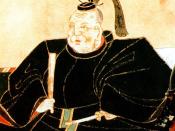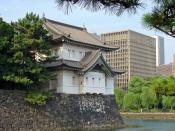The Meiji Restoration was not only a Japanese revolution but it was also a transformation of state for Japan. It morphed Japan from a feudal state to a more contemporary state while at the same time restoring imperial rule. This meant all feudal domains and territories to be returned to the imperial government. Basically what had happened was all feudal lords were losing authority and control over Japan, and the Control and authority was being put back into the throne of the emperor. The prefecture system better known as fu-ken-sei was a huge step towards centralizing authoritative power in Japan, and eliminating power that some feudal lords still had. Fu-ken-sei removed a former DaimyoÃÂs entitlement to govern their respective han. With the elimination of the Han System the Samurai of the four Han, Satsuma, Chochu, Tosa, and Hizen all became authoritative figures and with the new acquired power they wanted to fortify the stance of the central government.
The impetus for the Samurai to undermine the Tokugawa Shogunate is very simply put. They wanted to restore Imperial Japan and in some ways indirectly intertwine it more with the western world so as to not fall behind in its economy and military power. In addition to that the Samurai who led the Restoration were very unsatisfied with their social standing as well as JapanÃÂs condition under the Tokugawa Shogunate in reference to their Political structure and government.
The Tokugawa Shogunate rule was beginning to grow frail and outmoded. There were also internal rivalries that were deteriorating the ShogunateÃÂs order and power. Not to mention their Social structure as well was beginning to move into a state of declination. Most importantly their foreign relations was extremely conservative and traditional, which in turn was also outdated and not helping Japan in the least...


